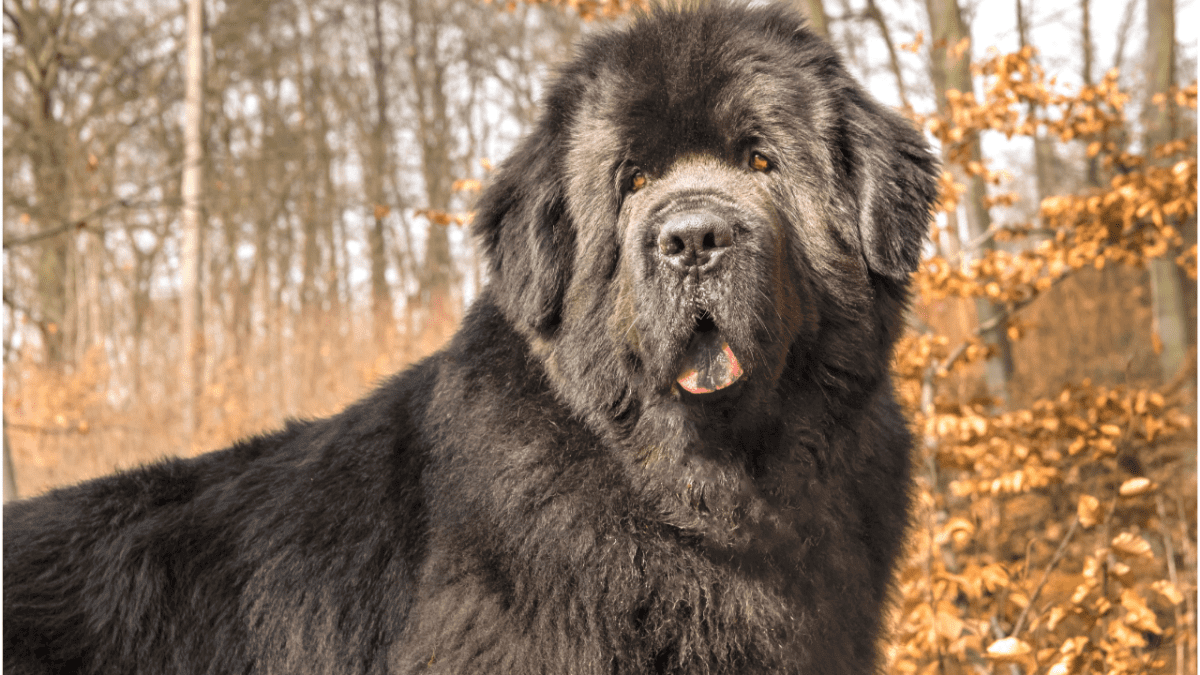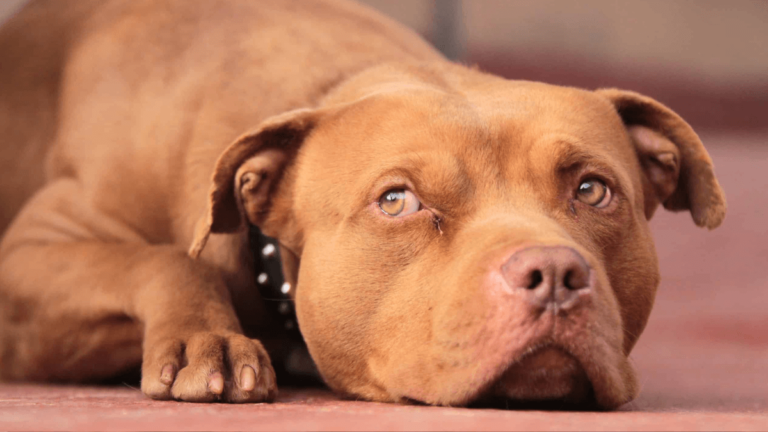Newfoundland Dog: Breed Info, Temperament, and Care Guide
The Newfoundland dog, affectionately known as the Newfie, is a remarkable and gentle giant renowned for its immense size, friendly disposition, and exceptional swimming abilities. Originating from the Canadian island of Newfoundland, these dogs have a rich history as working companions for fishermen, aiding in water rescues and hauling nets. Their loyalty, intelligence, and gentle nature make them beloved family pets and diligent working dogs.
Contents
- 1 History and Origin of the Newfoundland Dog
- 2 Physical Characteristics
- 3 Unique Features
- 4 Temperament and Personality
- 5 Interaction with Families and Children
- 6 Compatibility with Other Pets
- 7 Exercise Needs
- 8 Grooming and Maintenance
- 9 Dietary Considerations
- 10 Training and Socialization
- 11 Health and Lifespan
- 12 Living Conditions
- 13 Fun Facts and Famous Newfoundlands
History and Origin of the Newfoundland Dog
The Newfoundland dog breed traces its roots back to the Canadian island of Newfoundland. Historically, these dogs were indispensable to local fishermen, assisting with tasks such as pulling nets, hauling loads, and performing heroic water rescues.
The breed likely developed from indigenous dogs crossed with European breeds like the Great Pyrenees and the Portuguese Water Dog. Recognized by the American Kennel Club (AKC) in 1886, Newfoundland quickly gained popularity worldwide due to its impressive strength, endurance, and gentle temperament.
Physical Characteristics

Newfoundlands are one of the largest dog breeds, with males typically weighing between 130 to 150 pounds and females weighing between 100 to 120 pounds. They stand approximately 26 to 28 inches tall at the shoulder. Their dense, water-resistant double coat can be black, brown, gray, or Landseer. These dogs have broad heads, expressive eyes, and floppy ears, contributing to their sweet and approachable appearance.
Unique Features
- Size: Large, muscular build ideal for heavy work.
- Coat: Thick, water-resistant double coat.
- Colors: Black, brown, gray, and Landseer.
- Physical Build: Strong, powerful, and well-balanced.
Temperament and Personality
Newfoundlands are known for their sweet-tempered, gentle, and loyal nature. They are highly affectionate and great with children, often referred to as “gentle giants” due to their patient and nurturing demeanor. Despite their large size, they are remarkably calm indoors and can adapt well to family life.
Interaction with Families and Children
Newfies are incredibly patient and gentle with children, making them excellent family pets. They are protective without being aggressive, often positioning themselves between their family and potential threats. Their calm nature and tolerance make them ideal companions for kids.
Compatibility with Other Pets
Newfoundlands generally get along well with other pets, especially if they are socialized from a young age. Their friendly and non-aggressive nature helps them integrate smoothly into multi-pet households.
Exercise Needs

Despite their size, Newfoundlands do not require excessive exercise. About 20-40 minutes of moderate activity each day, such as walks or swimming, is sufficient to keep them healthy and happy. Swimming is particularly beneficial due to their natural affinity for water.
Grooming and Maintenance
Newfoundlands have moderate grooming needs. Their thick double coat requires regular brushing, at least once a week, to prevent matting and reduce shedding. During shedding seasons, more frequent grooming may be necessary. They also require regular nail trims, ear cleaning, and dental care.
Dietary Considerations
Newfoundlands need a balanced diet that meets their nutritional requirements. Due to their size and slower metabolism, it’s important to monitor their food intake to prevent obesity. Feeding them high-quality dog food twice a day is recommended, and consulting a veterinarian for specific dietary needs is essential.
Training and Socialization
Newfoundlands are intelligent and eager to please, making them relatively easy to train. Positive reinforcement methods work best, as harsh training techniques can be counterproductive. Early socialization is crucial to ensure they grow into well-mannered adults. Exposing them to various environments, people, and other animals helps build their confidence and good behavior.
Health and Lifespan
Newfoundlands typically have a lifespan of 8 to 10 years. They are prone to certain health conditions, including hip dysplasia, heart disease, cystinuria, and ear infections. Regular veterinary check-ups and a healthy lifestyle can help manage these issues and improve their quality of life.
Living Conditions
Newfoundlands adapt well to various living conditions but thrive best in homes with ample space to move around. They prefer cooler climates due to their thick coat, and care should be taken to prevent overheating in hot weather. Access to a yard or a nearby park for regular exercise is ideal.
Fun Facts and Famous Newfoundlands
- Nana in Peter Pan: The character Nana from J.M. Barrie’s Peter Pan was inspired by his Newfoundland dog.
- Historical Heroes: Newfoundlands have been known to save lives through water rescues and alerting families to fires.
- Famous Owners: Historical figures such as Lewis and Clark, Emily Dickinson, and Lyndon B. Johnson have owned Newfoundlands.
Conclusion
The Newfoundland dog is a remarkable breed known for its gentle nature, impressive strength, and loyal companionship. Whether as a working dog or a family pet, Newfies brings a unique blend of affection, intelligence, and dedication to any household. Their rich history and endearing personality traits make them a cherished breed among dog lovers.
Related: Dogo Argentino Dog Breed
Top FAQs About the Newfoundland Dog
What is the average lifespan of a Newfoundland dog?
The average lifespan of a Newfoundland dog is typically between 8 to 10 years. However, with proper care, including regular veterinary check-ups, a balanced diet, and sufficient exercise, some Newfoundlands may live slightly longer.
How much exercise does a Newfoundland dog need?
Newfoundlands require moderate exercise, around 20-40 minutes daily. They enjoy activities like walking and swimming, which cater to their natural affinity for water. While they don’t need intense exercise, regular physical activity helps keep them healthy and fit.
Are Newfoundland dogs good with children?
Yes, Newfoundland dogs are known for their gentle and patient nature, making them excellent companions for children. They are often referred to as “gentle giants” due to their calm demeanor and protective instincts, making them great family pets.
What are the common health issues in Newfoundland dogs?
Common health issues in Newfoundland dogs include hip dysplasia, heart disease, cystinuria, and ear infections. Regular veterinary visits and preventive care are crucial to manage these conditions and ensure the overall well-being of the dog.
How often should a Newfoundland dog be groomed?
Newfoundland dogs should be groomed at least once a week to prevent matting and reduce shedding. During shedding seasons, more frequent brushing may be necessary. Additionally, regular nail trimming, ear cleaning, and dental care are important to maintain their health and comfort.
- Golden Retriever Pros and Cons: What Every Pet Parent Should Know - 15 September 2025
- Cane Corso Dog Breed: Health, Care, and Lifespan - 14 September 2025
- Catahoula Leopard Dogs: Description, Temperament, Lifespan, & Facts - 21 July 2025







